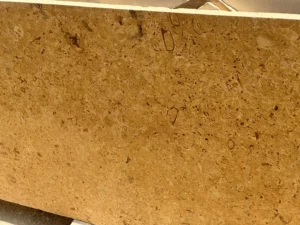What are the properties of Jaisalmer yellow sandstone?
Jaisalmer yellow sandstone, named after the city of Jaisalmer in Rajasthan, India, is a remarkable and popular building material known for its distinctive properties. This article explores the various aspects of Jaisalmer yellow sandstone, including its geological composition, physical properties, aesthetic appeal, and uses in architecture and construction.
Geological Composition
Jaisalmer yellow sandstone is primarily composed of quartz grains cemented together by silica and calcium carbonate. Its yellow color, which ranges from pale to bright yellow, is primarily due to the presence of minerals such as iron oxide. The uniform texture and grain size are indicative of the high quartz content, making it durable and resistant to weathering.
Physical and Mechanical Properties
Durability: This sandstone is extremely durable, owing to its dense composition and the presence of quartz. It is resistant to weathering, which makes it suitable for both interior and exterior applications.
Porosity and Permeability: Jaisalmer sandstone has a relatively low level of porosity, which reduces its water absorption capacity. This property enhances its suitability for outdoor constructions in rainy climates.
Strength: It is known for its compressive strength and hardness, which makes it suitable for heavy structural applications, including load-bearing walls.
Thermal Properties: The stone exhibits good thermal resistance and does not conduct heat rapidly, keeping interiors cool, a property highly valued in hot climates like that of Rajasthan.
Aesthetic Appeal
Color and Texture: The warm yellow hue provides a visually pleasing aesthetic, making it a popular choice for decorative elements. Its fine grain gives it a smooth finish, which can be polished or left rough-hewn.
Versatility in Design: The stone can be easily carved and shaped, which allows for detailed architectural and artistic expressions. Its ability to hold fine detail makes it ideal for intricate carvings and decorative works.
Uses in Architecture and Construction
Historical Monuments: Jaisalmer yellow sandstone has been used extensively in historical Indian architecture, including the Jaisalmer Fort and various temples, showcasing its longevity and cultural significance.
Modern Construction: In contemporary architecture, it’s used for cladding, flooring, landscaping, and as a decorative stone in buildings, owing to its strength and beauty.
Landscaping and Outdoor Features: Its resistance to weathering and low water absorption makes it ideal for outdoor uses, such as in garden pathways, patio stones, and exterior wall claddings.
Conclusion
Jaisalmer yellow sandstone, with its unique blend of durability, strength, and aesthetic appeal, continues to be a preferred material in both traditional and modern architecture. Its properties make it an excellent choice for a variety of applications, ensuring that structures built with it are not only beautiful but also enduring. This sandstone not only stands as a testament to India’s geological diversity but also to its rich cultural heritage in the realm of architecture and design.


